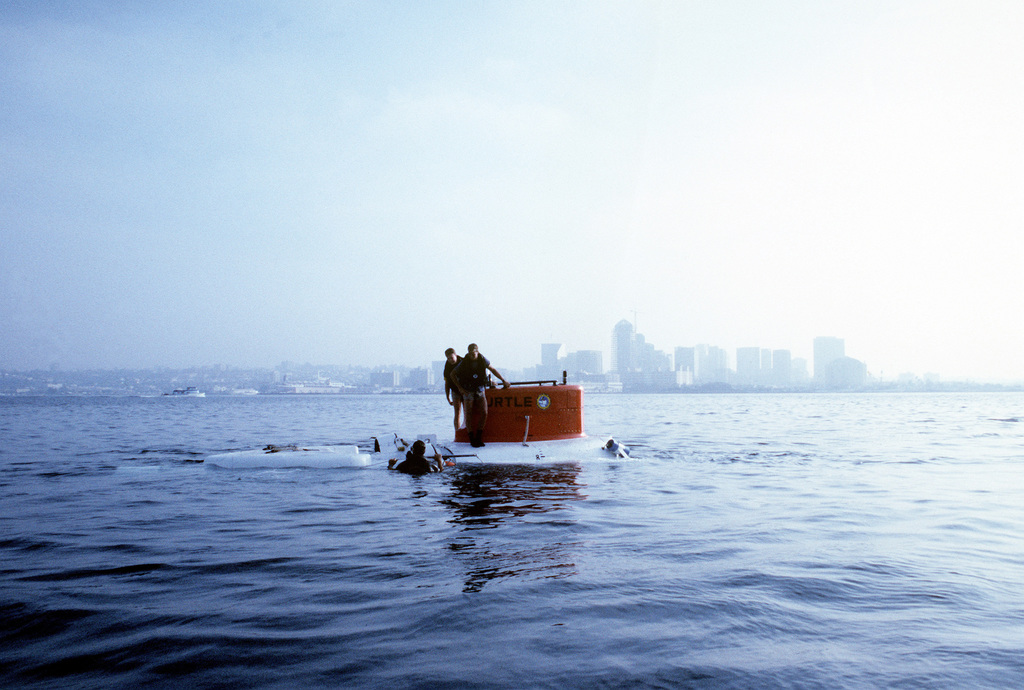
The US Navy has recently integrated its latest special operations mini-submarine, the Dry Combat Submersible (DCS), into its fleet. This marks a significant achievement for the Navy, as the DCS represents a major advancement in submersible technology, allowing personnel to remain fully submerged and protected during operations.
The DCS was manufactured by Lockheed Martin, who announced in May that the submarine had reached its initial operational capability with the Navy. The Undersea Systems program manager at the US Special Operations Command’s Program Executive Office-Maritime had projected that the DCS would be fully operational by the end of May. To date, Lockheed Martin has delivered two DCS units to the Navy, with a third one on the way.
The DCS is a variant of the S351 Nemesis, a mini-submarine design from UK-based MSubs. MSubs and Lockheed Martin have collaborated on the design and construction of the DCS since 2016. While full specifics of the DCS are undisclosed, some information is available based on the S351. This 30-ton, 39-foot-long submersible has an all-electric propulsion system and can travel 66 nautical miles at about five knots, descend to roughly 330 feet, and carry a crew of two with extra room for eight passengers or equivalent cargo.
The Navy’s latest SEAL Delivery Vehicle (SDV), the Mk 11, is just under 22 and a half feet long and can house a crew of two plus six passengers. However, this Shallow Water Combat Submersible (SWCS) is unpressurized, which limits its operational depth compared to the Dry Combat Submersible (DCS). The Navy and SEALs benefit from the DCS’s self-contained lock-in/lock-out chamber, which offers a more comfortable ride than “wet” SDVs that expose occupants to water.
Lockheed Martin states that the DCS provides safe, stealthy transport over long distances in a dry environment, leaving operators rested, warm, hydrated, and ready for their mission. It also allows for return in the same manner, possibly entirely underwater. This assists in deploying SEALs and other forces or extracting them.
The Navy has pursued a DCS-like capability for decades. Requirements for the Advanced SEAL Delivery System (ASDS) began in the 1980s but were canceled in 2009 after technical issues led to cost overruns. A Joint Multi-Mission Submersible program was also terminated in 2010. The DCS mini-submarine faced delays, with its initial operation capability slated for June 2021.
The DCS’s size limits its launch from submerged submarines via Dry Deck Shelters (DDS). Currently, only Virginia-class and Ohio-class submarines can carry DDSs. The DCS is transported by surface mothership, such as amphibious warfare vessels. The Navy is looking at using Air Force C-17A Globemaster III cargo aircraft to speed up DCS deployment.
The Navy aims to develop an improved DCS that can be dispatched from a Virginia-class submarine. Concept art shows a mini-submarine that can dock externally on the parent submarine’s hull, similar to the original ASDS plan. It is unclear if the existing DCS will be retrofitted to this configuration and if it’s feasible.
After years of work, the Navy has a new method of transporting SEALs and other special operations forces. This advancement offers enhanced comfort levels to these troops during missions.




